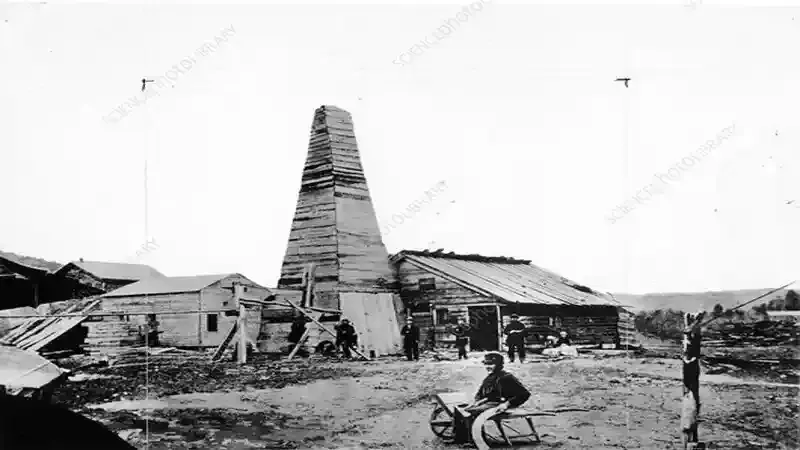Tracing the History of Oil and Gas: From Ancient Flames to Future Challenges
For thousands of years, humanity has been connected to the wondrous flow of oil and gas. From ancient flames illuminating mystical sites to modern challenges in the sustainable use of fossil fuels, this journey has been a cornerstone in shaping civilizations and industries.
The history of oil and gas spans through the ages, creating a golden era and witnessing incredible technological evolution. From its initial use as a source of light to becoming a primary driver of the modern industry, fossil fuels have played a central role in human development.
Delving deeper into the history of oil and gas is an endeavor to understand how these resources have shaped our world, fostering innovation, and presenting significant challenges in the context of global sustainability. READ: Overview of the Oil and Gas Industry: Stages, Equipment, and Innovations
Ancient Roots
The story begins with oil's early uses for lighting, where fortunate societies witnessed natural seepage of crude oil or gas.
The oracle of Delphi, standing since 1,000 B.C., attests to the eternal fires caused by ignited oil and gas seeps.
Chinese sources in 500 B.C. noted the use of natural gas for boiling water, hinting at the ancient world's familiarity with these resources.
Colonel Drake and the Birth of Exploration
In 1859, Colonel Edwin Drake ushered in a new era by drilling the first successful oil well, the famous Drake Well in Pennsylvania. This marked the intentional exploration for oil and set the stage for the global quest to discover industrial uses for petroleum.
Despite shallow depths, early wells like the Phillips well in Oil Creek Valley were prolific, producing significant oil yields by 1861.
Oil's Takeover
Oil swiftly became the preferred fuel for transportation, especially with the rise of the automobile industry at the close of the 19th century.
The speed advantage of oil-powered ships gave a crucial edge in military contexts. However, challenges arose, such as the lack of standardization in barrel sizes, making it difficult to determine oil prices accurately.
Post-WWII Innovations
Post-World War II, significant strides in welding, pipe rolling, and metallurgy paved the way for reliable long-distance pipelines. The natural gas industry experienced a boom as a result, decades after attempts at gas transportation began in 1821.
Refining and Petrochemicals
Refining became pivotal to meet the demands of the burgeoning automotive industry. The shift in value from refining to upstream production required refineries to enhance high-value fuel yield through advanced processes.
Petrochemicals, derived from oil and gas, burgeoned after World War II, playing a vital role in modern economies and societies.
Modern Challenges
As oil prices soared past $100 a barrel, once challenging sources like tar sands, shale oil and gas, coal bed methane, synthetic diesel, biodiesel, and bioethanol became economically viable.
This abundance, however, raises concerns about the sustainable use of fossil fuels. The challenge lies not only in resource availability but also in managing environmental impacts, from local pollution to global climate effects.
Read also: Facilities and Processes of Oil and Gas Production
Conclusion:
The history of oil and gas is a tale of innovation, conquest, and adaptation. From ancient flames to the complex challenges of the present, these resources have shaped our world. As we stand on the cusp of an uncertain energy future, the narrative of oil and gas continues, intertwined with the intricate story of human progress.
Photo: First oil well in the USA 1859 (www.sciencephoto.com).

